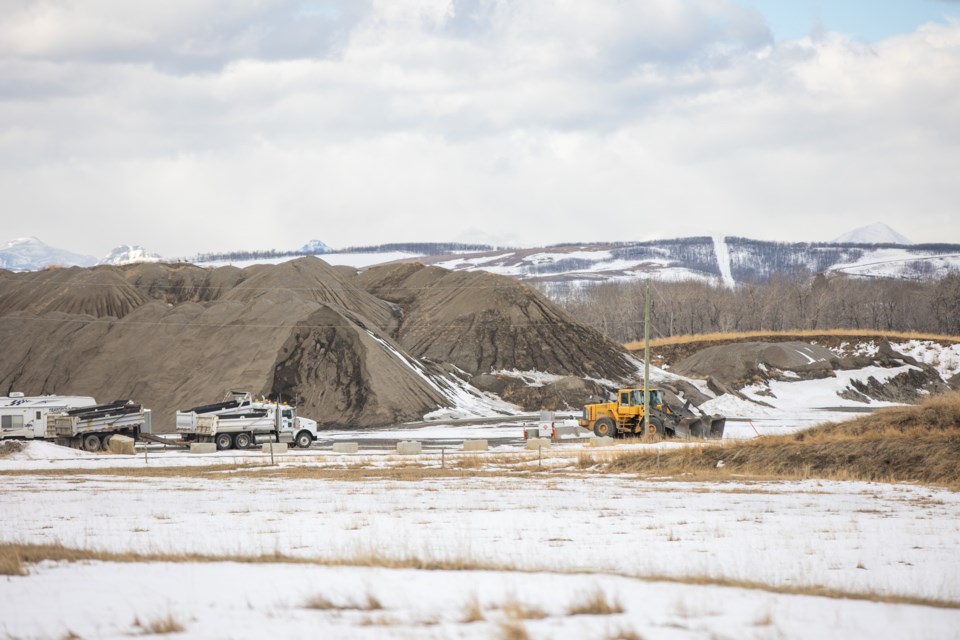Gravel pits were a source of debate as Foothills council approved its updated screening guidelines for commercial and industrial areas.
In October, council reviewed recommended changes to the existing screening standards and indicated some categories were too broad, and that gravel pits should be exempted from screening requirements as they are regulated by the Province and are often difficult to conceal.
“Most of our gravel pits are out in ag areas,” said Coun. Rob Siewert. “I would suggest in those types of situations, that’s not realistic. How do you screen a massive gravel pit like that?”
He added many pits are adjacent to rolling terrain, which in some cases can help screen but can also make it difficult to berm or hide operations.
Gravel pits tend to be short-term uses as well, he said.
“They’re only there for 20 years. It’s not like it’s a permanent thing forever and ever,” said Siewert.
Coun. R.D. McHugh requested a footnote be added to the screening standards to indicate gravel pits are subject to provincial standards, regulated by Alberta Environment and Parks (AEP), rather than holding them accountable to the municipal requirements.
“We can’t shoot ourselves in the foot and have something different than what AEP requires for a gravel pit application,” said McHugh. “I’m happy with the screening standards. We just need a footnote somewhere in the document to refer to AEP screening standards for gravel pits, and I would be extremely happy.”
He said gravel operations aren’t specifically addressed in the County document, and it’s best to leave their regulation up to the Province.
Municipal manager Harry Riva Cambrin said new gravel pits require proper zoning by the County and a development permit. While some are under direct control, with decision being made by council, others are subject to the development officers’ discretion.
Either way, they fall outside the purview of the screening standard document, he said, adding the footnote to indicate they are subject to AEP standards and municipal approvals would suffice.
“They are their own beast and there are all kinds of rules around them, and we deal with them all the time,” said Riva Cambrin.
The revised screening standard document also indicates there could be exceptions for unsightly industrial or commercial uses, such as gravel works or stockpiles, located next to one another.
“If it’s next to another use that would be also considered unsightly, the level of screening could be reduced or even eliminated altogether,” said Julie McLean, development officer for the County.
The document stipulated 50 per cent screening requirements between two industrial uses, such as between the Volker Stevin operation and Warner Business Park site.
Some accommodations have been made in screening types, with chain link fence outfitted with vinyl slats being permitted in the Highway 2A corridor, where they were initially recommended not to be permitted.
Siewert said he was pleased to see that amendment and thanked staff for their work on changed to the standards.
“I think we’ve come a long way from where we were in terms of cleaning this up, making it more clear and reducing red tape along the way as well,” he said. “Hopefully now we can be clear on what we want.”




